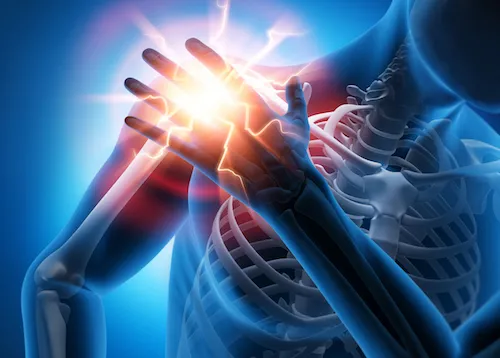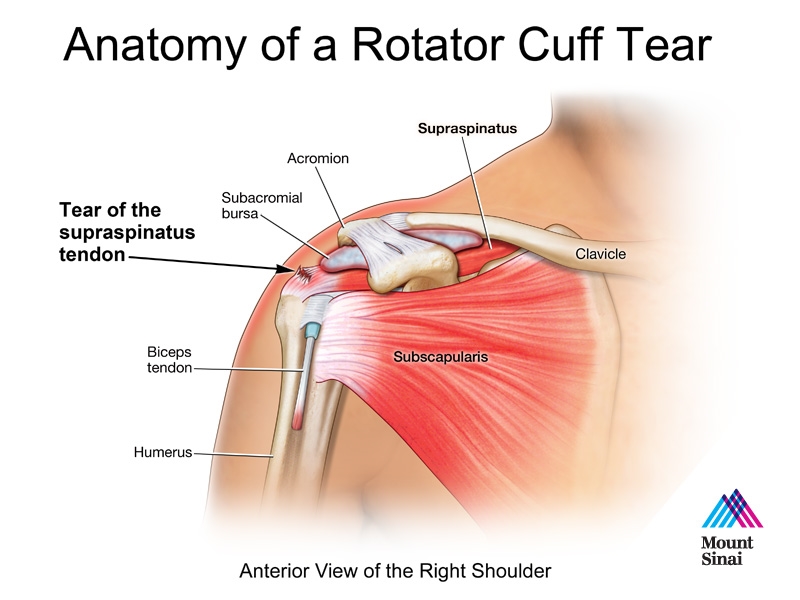What is Frozen Shoulder?
- Frozen shoulder is a condition that causes pain in your shoulder. This pain usually prevents you from moving your arm, and the related lack of movement can lead to stiffness and even a loss of mobility. Also known as adhesive capsulitis, frozen shoulder is usually caused by inflammation. The capsule of the shoulder joint has ligaments that hold the shoulder bones to each other. When the capsule becomes inflamed, the shoulder bones are unable to move freely in the joint.
- After a period of worsening symptoms, frozen shoulder tends to get better, although full recovery may take up to 3 years. Physical therapy, with a focus on shoulder flexibility, is the primary treatment recommendation for frozen shoulder.
- Frozen shoulder most commonly affects people between the ages of 40 and 60 and occurs in women more often than men. In addition, people with diabetes are at an increased risk for developing frozen shoulder.
Anatomy:
- Your shoulder is a ball-and-socket joint made up of three bones: your upper arm bone (humerus), your shoulder blade (scapula), and your collarbone (clavicle).
- The head of the upper arm bone fits into a shallow socket in your shoulder blade. Strong connective tissue, called the shoulder capsule, surrounds the joint.
- To help your shoulder move more easily, synovial fluid lubricates the shoulder capsule and the joint.
Stage 1: Freezing
- In the “freezing” stage, you slowly have more and more pain. As the pain worsens, your shoulder loses range of motion. Freezing typically lasts from 6 weeks to 9 months.
Stage 2: Frozen
- Painful symptoms may improve during this stage, but the stiffness remains. During the 4 to 6 months of the “frozen” stage, daily activities may be very difficult.
Stage 3: Thawing
- Shoulder motion slowly improves during the “thawing” stage. Complete return to normal or close to normal strength and motion typically takes from 6 months to 2 years.
Symptoms:
- Pain from frozen shoulder is usually dull or aching. It is typically worse early in the course of the disease and when you move your arm. The pain is usually located over the outer shoulder area and sometimes the upper arm.
What can help ?
- Massage and stretching are extremely beneficial for treating frozen shoulder pain. Massage helps to relieve tension and tightness so your muscles can relax. This helps to restore mobility and improve function. It also may help improve blood flow to the affected area and reduce inflammation.






